40 hazard class labels must be placed
GHS Labeling Requirements: The Definitive Guide [2021 Update ... - Luminer The letter-number combination that precedes the GHS hazard classification is only for reference. There are 80, so these "H codes" make it easier to find the appropriate label. The European Union has another 26. However, it's the actual statement that must appear on the label in order for it to comply with the GHS framework. Hazmat Labels, Hazmat Placards, and Hazmat Markings - A ... - Labelmaster The hazard class number in the bottom corner of the placard must measure at least 41 mm. They are legible - text used on a hazard placard must be in English unless otherwise required by a competent authority. Any text, borders, symbols, and hazard classes may be either black or white. Where are DOT placards placed?
GHS Hazard Classification: Everything You Need to Know A chemical will have a hazard class, and within that class are several hazard categories, of which one or more will apply. Section 2 of the new GHS Labels and SDSs require hazard statements which are determined by assigning a hazard class and category. As a manufacturer, importer, or distributor you'll need to know how to classify hazards.

Hazard class labels must be placed
Hazmat Placards and Hazardous Waste Labels As a result, a Flammable Liquid label is required for each drum. Because the drum contains a hazardous waste, we need a hazardous waste label. We enter the required waste and DOT markings on the hazardous waste label and affix it on the side of the drum. We then place a primary hazard Flammable Liquid label next to the waste label. PDF BRIEF - Occupational Safety and Health Administration The same product identifier must be both on the label and in section 1 of the SDS. • Signal Words are used to indicate the relative level of severity of the hazard and alert the reader to a potential hazard on the label. There are only two words used as signal words, "Danger" and "Warning." Within a specific hazard class, "Danger" 49 CFR § 172.406 - Placement of labels. | CFR | US Law | LII / Legal ... § 172.406 Placement of labels. (a) General. (1) Except as provided in paragraphs (b) and (e) of this section, each label required by this subpart must - (i) Be printed on or affixed to a surface (other than the bottom) of the package or containment device containing the hazardous material; and
Hazard class labels must be placed. WHMIS 2015 - Labels : OSH Answers In Canada, WHMIS legislation requires that products used in the workplace that meet the criteria to be classified as hazardous products must be labelled. Labels are the first alert to the user about the major hazards associated with that product, and outline the basic precautions or safety steps that should be taken. Labelling - WorkSafe Labels are placed on hazardous substances containers so that people, including workers and emergency services personnel, know what's inside and can take the correct precautionary measures. ... Stationary tanks and process containers containing class 1 - 5 substances must also include the steps required to prevent unintended explosion ... eCFR :: 49 CFR Part 172 Subpart E -- Labeling When compatible hazardous materials having different hazard classes are packed within the same packaging, or within the same outside container or overpack as described in § 173.25, the packaging, outside container or overpack must be labeled as required for each class of hazardous material contained therein. ( b) Consolidated packaging. Labeling requirements of the Hazard Communication Standard ... As we discussed last week, OSHA requires manufacturers of hazardous substances to list the hazards of the chemical, including the target organ effects, on the container label. OSHA has specifically stated that phrases such as "caution", "danger", or "harmful if inhaled" are not sufficient.
Dangerous goods classes and hazard labels - Civil Aviation Safety Authority Below are the 9 hazard labels for the 9 classes of dangerous goods. Class 1 Explosives Class 1 explosives This includes items such as: explosive substances pyrotechnic devices ammunition fireworks detonators. Class 2 Gases Class 2 gases These can be transported as compressed, liquefied, refrigerated liquefied or gas in solution. Understanding Shipping Labels and Placards for Radioactive Materials Excepted packagings are excepted (excluded) from specific packaging, labeling, and shipping paper requirements; they are however, required to have the letters "UN" and the appropriate four-digit UN identification number marked on the outside of the package. Requirements for excepted packaging are addressed in 49 CFR 173.421. Hazmat Labels and Marking for Shipments: What You Need to Know to Stay ... The hazard class number of the material being transported must be displayed at the bottom corner of each placard. Each placard must be diamond shaped and must measure at least 9.84 inches (250 mm) on each side. The text and numbers included in the placard - the hazard class number in particular - must measure at least 1.6 inches (41 mm). DOT Labeling Requirements: When Does a Hazmat Package Need Labels? Labels are required for hazardous materials that meet one or multiple hazard classes or divisions as defined in the rules. To use this table, find the hazard class or division in the left hand column. You'll see the name of the label, which does matter in more advanced shipping scenarios.
WHMIS 2015 - Hazard Classes and Categories : OSH Answers WHMIS 2015 applies to two major groups of hazards: physical, and health. Each hazard group includes hazard classes that have specific hazardous properties. Physical hazards group: based on the physical or chemical properties of the product - such as flammability, reactivity, or corrosivity to metals. Health hazards group: based on the ability ... 325 DOT Hazardous Materials Warning Labels and Markings - USPS 325.1 General Requirements All required hazardous materials warning labels and markings must be placed on the address side of the package. Only in limited situations where sufficient space does not exist, DOT markings may be placed on a side adjacent to the address. Markings and labels must not be placed on the bottom of a package or envelope. Marking & Labeling Your Shipment - Federal Aviation Administration 49 CFR 172.406 states labels must be printed on or affixed to a surface (other than the bottom) of the package or containment device containing the hazardous material and be located on the same surface of the package and near the proper shipping name marking, if the package dimensions are adequate. Hazmat Label Requirements and Regulations - LPS Industries The labeling must include the name of the manufacturer. It should be printed outside the solid-line inner border with a maximum font size of 10-point. Exceptions Except for materials poisonous by inhalation, a label meeting the UN Recommendation (to Hazmat labeling), IBR 171.7, may be used in place of the label standards set by 172.407.
IATA Dangerous Goods Training | Hazmat University Hazmat University's IATA Dangerous Goods Online Training can help these employees understand the regulatory requirements for marking and labeling. To purchase your initial or recurrent Online IATA Certification Training, call us at (844) 532-7634 / (609) 860-0300 or contact us online. Get Online Limited Quantities Training: ORM-D Exception ...
Hazardous Waste Drum Label Requirements - IDR Environmental The primary hazard label should always be given priority in placement. In other words, if the drum includes two labels, the primary label should be placed above and to the left of the subsidiary hazard label. Do not place labels on the bottom of drums. This increases the risk of workers overlooking the label.
49 CFR § 172.402 - Additional labeling requirements. | CFR | US Law ... In addition to the label specified in column 6 of the § 172.101 table, each package of Class 1 material that also meets the definition for: (1) Division 6.1, Packing Groups I or II, shall be labeled POISON or POISON INHALATION HAZARD, as appropriate. (2) Class 7, shall be labeled in accordance with § 172.403 of this subpart.
Hazardous Materials Markings, Labeling and Placarding Guide (DOT Chart ... Hazardous Materials Markings, Labeling and Placarding Guide (DOT Chart 16) usdot-chart-16-10-24-2017.pdf. Hazardous Materials Markings, Hazardous Materials Warning Labels, Hazardous Materials Warning Placards, General Guidelines on Use of Warning Labels and Placards. Last updated: Thursday, June 3, 2021.
PDF DOT CHART 16 Hazardous Materials Markings,Labeling and Placarding Guide corner of a primary and subsidiary hazard label [§172.402(b)]. • For classes 1,2,3,4,5,6, and 8, text indicating a hazard (e.g., "CORROSIVE") is NOT required on a primary or subsidiary label. The label must otherwise conform to Subpart E of Part 172 [§172.405]. • Labels must be printed on or affixed to the surface of the package near the
Is a Placard Required? - ICC Compliance Center Inc - USA The placarding requirements are found in Part 172.500 of the Hazardous Materials Regulations. The general rule is going to be: If in bulk, you always need a placard. If non-bulk, then it depends on if the hazard class is in Table 1 or 2, and the amount that is being shipped. Also, in most cases, 4 placards are required, one on each side and one ...
PDF Placarding Requirements - Pipeline and Hazardous Materials Safety ... The Dangerous Placard may be used if the shipment contains non-bulk packages of two or more classes, requiring different placards from Table 2. 17 §172.504(b) May be used when: 1. 2 or more hazardous materials 2. Only Table 2 items 3. Non-Bulk Packages 4. < 2,205lbs. Aggregate gross weight loaded at one facility 18 Domestic Use Only!!!
Hazmat Label Specifications and Requirements from Labelmaster Hazard class labels must be durable and weather resistant. These labels must withstand without deterioration or change in color, a 30-day exposure to reasonable transport conditions. Design Printing, inner border, and symbol must be on label as shown in 49 CFR 172.411 through 172.448.
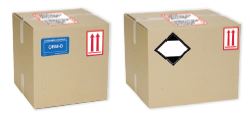
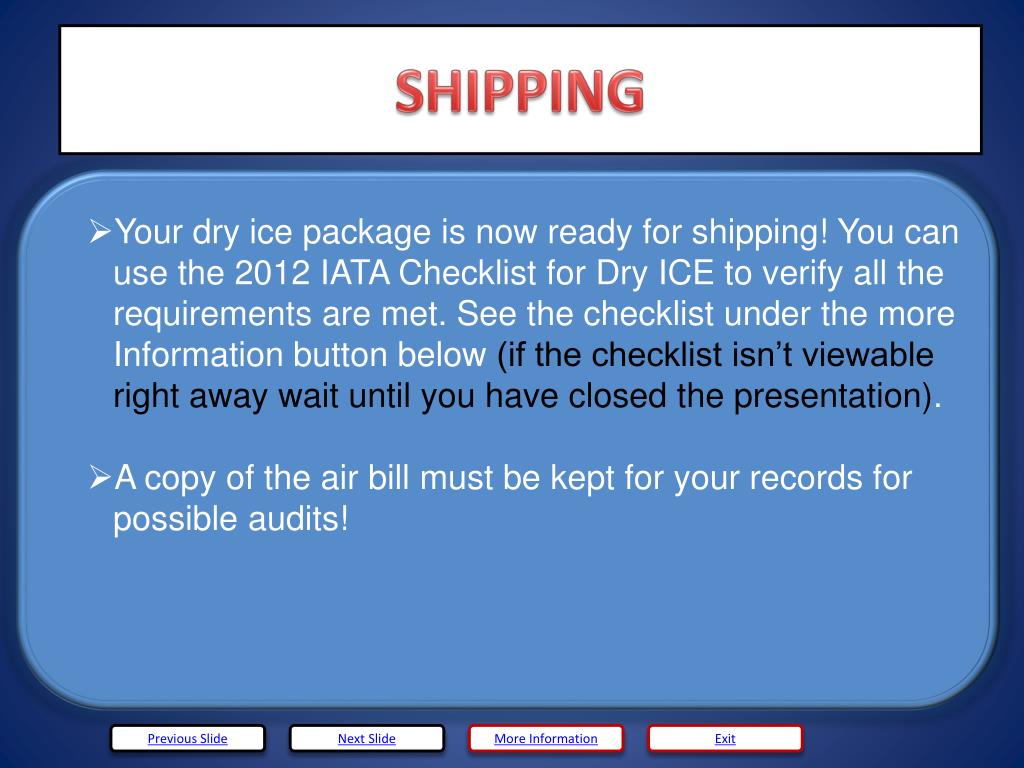
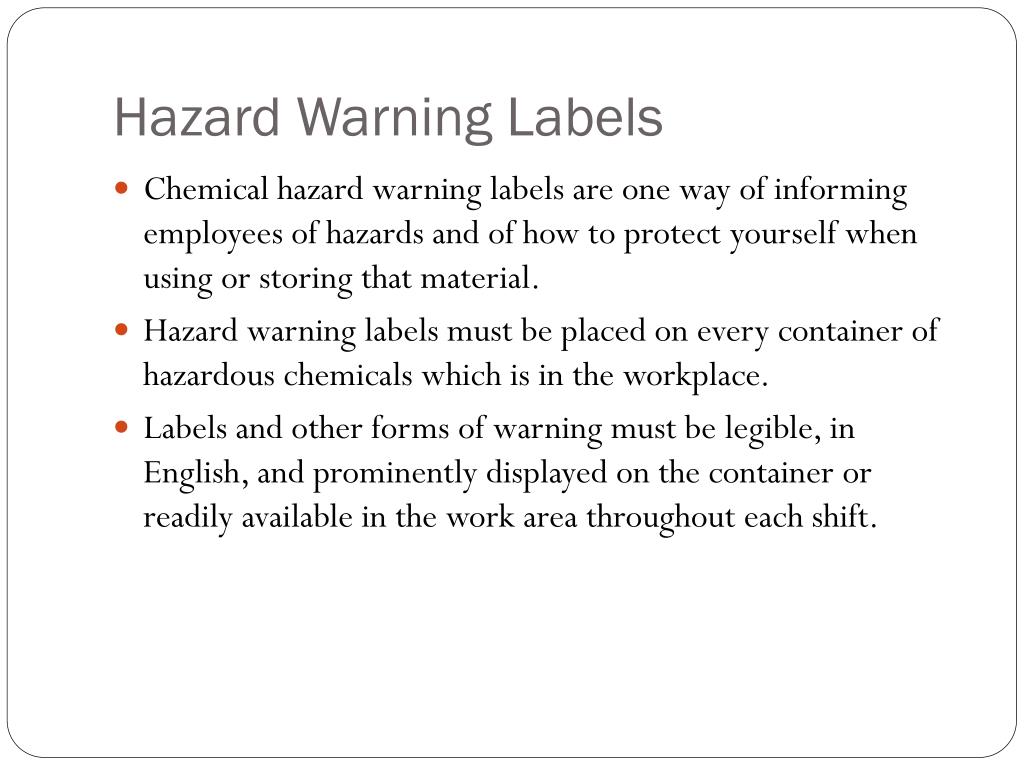
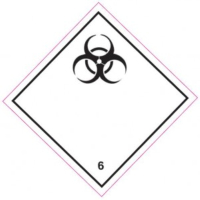
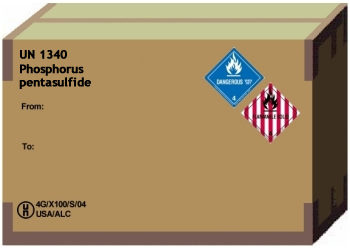
Post a Comment for "40 hazard class labels must be placed"